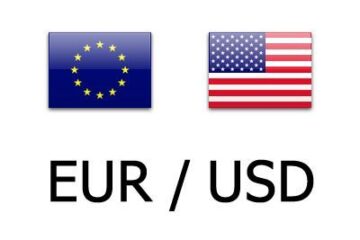Chips slip to start year, but driving forces for industry remain well entrenched.
The benchmark PHLX Semiconductor Index (SOX) is in retreat in early 2022, down about 2% through January 11. The index is still up about 30% over a one-year timeframe.
No doubt about it, 2022 should be an interesting year for semiconductors, as many investors play a game of chicken with chip stocks, holding on as long as they can with chip demand so high due to supply shortages. When that ends, the industry likely returns to normal and semiconductor prices should moderate.
As usual, the timeline for all that happening is cloudy. Fortunately, TheStreet’s trading experts offer some guidance.
A case in point. In his recent piece, “16 Realistic Tech Predictions for 2022 (Part 1)”, TheStreet’s Eric Jhonsa calls for a robust first half of the year for semiconductors, followed by a sector slide for the second half of the year.
“In the very near-term, chip stocks could see profit-taking amid rotational flows out of tech,” Jhonsa said. “But outside of that, many chip developers and equipment makers — particularly the companies that haven’t been bid up to steep multiples — look well-positioned to continue outperforming over the next six months or so.”
According to Jhonsa, demand across many end-markets — from smart phones and high-end PCs, to servers and gaming hardware, to cars and industrial/IoT products — remains solid, and a lot of current chip shortages are unlikely to fully go away before late 2022 (and in some cases, 2023).
“Moreover, I think markets are still in the process of re-rating various chip stocks — both chip developers such as NXP (NXPI) – Get NXP Semiconductors NV Report, ON Semi (ON) – Get ON Semiconductor Corporation Report and Broadcom (AVGO) – Get Broadcom Inc. Report, as well as equipment makers such as Applied Materials (AMAT) – Get Applied Materials, Inc. Report, KLA (KLAC) – Get KLA Corporation Report and Lam Research (LRCX) – Get Lam Research Corporation Report — that have historically been valued like low-growth cyclical plays, as investors gain a better appreciation of the secular growth drivers the industry has over the coming decade,” he noted.
“That said, cycles fueled by major inventory builds and draw-downs are still a fact of life for the chip industry, and (as was the case in 2018) chip stocks typically begin selling off before it’s blindingly obvious to all that an up-cycle is ending.”
While the current cycle is unlikely to truly turn before late 2022 or early 2023, Jhonsa said it’s not hard to see chip stocks — many of which have registered big gains over the last three years — coming under pressure as observers read the tea leaves.
“That’s particularly the case if signs emerge in the summer or fall of cooling demand in end-markets such as smartphones, PCs and gaming hardware, or of cloud capex entering a digestion period following a long stretch of torrid growth,” he noted.
What do other market commentators from TheStreet have to say about semiconductors stocks this week? Here’s a look-see.
VanEck Semiconductor ETF (SMH) – Get VanEck Semiconductor ETF Report $303.27.
Semiconductor stocks were among the best performers in 2021.
“That’s due to a global supply chain disruption that spiked the demand for chips that go into everything from phones to vehicles, the sector bucked the trend of what should have been an economically challenging situation and turned it into something positive,” said TheStreet’s David Dierking.
Truth be told, semiconductor stocks have been fantastic performers for years.
“The 10-year average annual return for this sector has been 25-30%, depending on the ETF or how you’re investing,” Dierking noted. “Investors expecting those kind of returns over the next decade should probably tap the brakes since this group is looking quite expensive, while the Fed tightening cycle, easing supply chains and slowing global growth could all work against this group in 2022.”
In the meantime, Dierking recommends the VanEck Semiconductor ETF, with a return of 41.8% in 2021, as one of his top funds of 2022.
“SMH is one of the largest and most concentrated semiconductor stock portfolios available,” he said. “It tracks an index that includes just 25 stocks and has nearly 60% of assets in the top 10 holdings. It’s market cap-weighted and therefore skews heavily towards large-cap names, including Taiwan Semiconductor and Nvidia, which alone account for 20% of the portfolio.”
“If you’re looking for concentrated semiconductor exposure, this may be the ETF for you.”
Advanced Micro Devices (AMD) – Get Advanced Micro Devices, Inc. Report $137.31.
AMD saw its share price rise on January 11 after KeyBank upped the chipmaker’s rating and share price target.
KeyBank analyst John Vihn specifically cited AMD’s $35 billion takeover of Xilinx (XLNX) – Get Xilinx, Inc. Report in the firm’s research note.
The deal will add a new dimension of programmable FPGA semiconductors to the chipmaker’s arsenal, Vinh noted, which will “position it well for the long-term transition to heterogeneous compute architectures.”
Overall, Vinh lifted his rating on AMD to ‘overweight’, with a price target of $155 per share, on the basis that demand for its data center chips should “meaningfully outpace” growth in the broader industry, particularly given the links to flexible CSP contracts with tech giants Microsoft MSFT and Meta (MVRS) – Get Meta Report.
“We view AMD as one of the most compelling server growth stories in the semiconductor industry, given its outsized exposure to CSPs vs. enterprise,” said Vinh. “Additionally, we expect AMD to significantly outpace cloud industry growth in 2022 of high teens, as we expect continued market share gains.”
TheStreet’s Jhonsa also likes AMD, especially as it forges ahead in the hardware market.
“Nvidia (NVDA) – Get NVIDIA Corporation Report exited 2021 with undisputed leadership positions in the gaming and server GPU markets,” Jhonsa said. “With the help of the company’s massive software investments and unmatched developer ecosystem, it’s a safe bet that Nvidia will exit 2022 maintaining said leadership positions. “
But with the help of an expanded R&D budget that’s financing a number of architecture, packaging and interconnect innovations, Advanced Micro Devices is becoming a lot more competitive hardware-wise. “And that arguably leaves the company well-positioned to take some share in 2022,” Jhonsa noted.
ASML Holding (ASML) – Get ASML Holding NV Report. TheStreet’s Bruce Kamich sees an “upside breakout” for ASML – and maybe sooner than later.
Kamich said his charts show that ASML shares have traded sideways the past four months in a tighter and tighter high/low range.
“Prices have made lower highs and higher lows as they move towards an apex of what is called a symmetrical or equilateral triangle,” he said. “Buying and selling pressures are balanced but the prior trend was up so typically we see prices break out to the upside in a continuation of the rally.”
Trading volume has declined since late September and that is also typical of Kamich’s chart pattern.
“The On-Balance-Volume (OBV) line also shows a triangle-like sideways movement, while The Moving Average Convergence Divergence (MACD) oscillator crossed to the upside last month for a cover shorts buy signal,” he noted. “An outright buy signal could come soon if prices turn higher.”
Overall, Kamich sees a “big long-term rally” with ASML. “Prices are trading above the rising 40-week moving average line and have made a four-month consolidation pattern,” he said. “The weekly OBV line shows a long-term uptrend with a slight decline the past two months. The weekly MACD oscillator is in a decline but has narrowed in recent weeks. A bullish crossover could be seen in the weeks ahead.”
As a result, the odds or probabilities favor an upside breakout on ASML.
“Traders could go long ASML at current levels risking to $725 or below the rising 200-day line,” Kamich said. “Conservative traders could wait for a breakout over the highs of December before going long. Our price target for now is the $959 area.”


